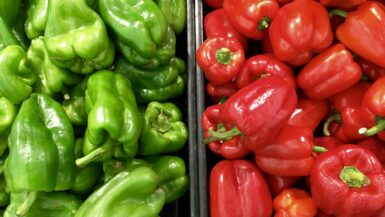In today’s world, it is becoming increasingly important to be aware of what we consume. With the rise of processed and packaged foods, it is crucial to understand what ingredients are in the products we buy. Reading food labels has become a vital step in making informed decisions about our diets. The information provided on food labels can help us understand the nutritional value of the product, identify potential allergens, and make healthier choices. This article will explore the importance of reading food labels and how it can benefit our overall health and wellbeing.
Understanding the Nutritional Information on Food Labels
Food labels provide valuable information about the nutritional content of the food we consume. By understanding the nutritional information on food labels, we can make informed decisions about what we eat and maintain a healthy and balanced diet. The nutritional information on food labels typically includes the number of calories, the amount of macronutrients (carbohydrates, fats, and proteins), and the percentage of daily value (%DV) of various vitamins and minerals that the food contains.
The calorie count is a measure of the energy content of the food. It is important to keep track of the number of calories we consume to manage our weight and prevent overeating. The macronutrient content of the food is also crucial to consider, especially if we are trying to maintain a specific diet or achieve specific health goals. For example, if we are trying to reduce our intake of saturated fats, we need to check the fat content on the food label and avoid products that are high in saturated fats.
The %DV of various vitamins and minerals that the food contains helps us determine if we are meeting our daily nutritional requirements. For example, if a food item has a high %DV of vitamin C, it can be a great addition to our diet if we need more of this nutrient. Conversely, if a food item has a high %DV of sodium, we may want to limit our intake of that food to avoid consuming too much salt.
In summary, understanding the nutritional information on food labels can help us make informed decisions about what we eat and maintain a healthy and balanced diet. By paying attention to the calorie count, macronutrient content, and %DV of various vitamins and minerals, we can ensure that we are meeting our nutritional requirements and staying on track with our health goals.
How to Identify Hidden Sugars and Fats in Food Labels
When reading food labels, it is important to pay attention to the amount of sugar and fat hidden in the food. Many processed foods contain high amounts of added sugars and unhealthy fats, which can contribute to various health problems such as obesity, heart disease, and diabetes. Here are some tips on how to identify hidden sugars and fats in food labels.
Check the Ingredient List
The ingredient list on food labels provides valuable information about the contents of the food. Ingredients are listed in descending order by weight, so the first few ingredients listed are the ones that make up the majority of the food. Look out for ingredients such as high fructose corn syrup, malt syrup, dextrose, sucrose, and glucose, which are all types of added sugars. Also, keep an eye out for saturated and trans fats, which can raise cholesterol levels.
Look at the Sugar and Fat Content
The sugar and fat content of a food item is listed under the “Total Carbohydrates” and “Total Fat” sections on the food label. However, it is important to note that not all sugars and fats are bad for us. Natural sugars found in fruits and dairy products are healthy, while unhealthy fats such as trans fats should be avoided. Aim to choose foods that have low amounts of added sugars and unhealthy fats.
Watch Out for Misleading Labels
Food companies often use misleading labels such as “low-fat” or “sugar-free” to attract consumers. However, these labels can be deceptive as the food may still contain high amounts of other unhealthy ingredients. Always check the ingredient list and the sugar and fat content to get a more accurate picture of the nutritional value of the food.
In summary, identifying hidden sugars and fats in food labels is essential for maintaining a healthy and balanced diet. By checking the ingredient list, looking at the sugar and fat content, and watching out for misleading labels, we can make informed decisions about the food we consume and avoid foods that can be detrimental to our health.
The Impact of Food Additives and Preservatives on Health
Food additives and preservatives are commonly used in processed foods to enhance flavor, texture, and shelf life. However, some of these additives and preservatives have been linked to various health problems. Here’s how food additives and preservatives can impact our health and what we can do to minimize our exposure to them.
The Risks of Food Additives
Some food additives have been linked to health problems such as allergies, asthma, and hyperactivity in children. For example, sulfites, which are commonly used in dried fruits, wine, and processed meats, can trigger asthma attacks in some people. Artificial food dyes, which are used to enhance the color of certain foods, have been linked to hyperactivity in children and may also be carcinogenic.
The Risks of Preservatives
Preservatives are added to food to prevent spoilage and extend shelf life. However, some preservatives have been linked to health problems such as allergies, asthma, and cancer. For example, sodium nitrate and sodium nitrite, which are commonly used in processed meats, have been linked to an increased risk of colon cancer.
How to Minimize Exposure to Food Additives and Preservatives
To minimize our exposure to food additives and preservatives, we can choose to eat more whole foods and fewer processed foods. When buying processed foods, we can look for products that are free from artificial colors, flavors, and preservatives. We can also check the ingredient list on food labels and avoid products that contain additives and preservatives that we are sensitive to or that have been linked to health problems.
In summary, food additives and preservatives can have a negative impact on our health. By being aware of the risks associated with these additives and preservatives and making informed decisions about the food we consume, we can minimize our exposure to them and maintain a healthy and balanced diet.
The Role of Food Labels in Managing Food Allergies and Intolerances
For individuals with food allergies or intolerances, reading food labels is crucial to avoid consuming foods that can cause adverse reactions. Food labels provide information about the ingredients used in the food, which can help people with food allergies or intolerances make informed decisions about what they eat. Here’s how food labels can help manage food allergies and intolerances.
Identifying Allergens and Intolerances
Food labels are required to list major food allergens such as peanuts, tree nuts, milk, eggs, soy, wheat, fish, and shellfish. By checking the ingredient list on food labels, individuals with food allergies can easily identify if a food product contains an allergen that they are sensitive to. Food labels also provide information on potential cross-contamination with allergens during the manufacturing process, which is important for people with severe food allergies.
For individuals with food intolerances, such as lactose intolerance, food labels can also provide valuable information about the ingredients used in the food. By checking the ingredient list, individuals can avoid foods that contain ingredients that they are sensitive to or that may trigger symptoms.
Making Informed Decisions
Food labels help individuals with food allergies or intolerances make informed decisions about what they eat. By providing information about the ingredients used in the food, individuals can avoid foods that may cause adverse reactions. Food labels also provide information on the amount of sugar, fat, and salt in the food, which is important for individuals with certain health conditions.
Understanding Labeling Terminology
Understanding labeling terminology is important for individuals with food allergies or intolerances. For example, the term “may contain” or “processed in a facility that also processes” indicates that the food may have come into contact with an allergen during the manufacturing process, which can be dangerous for individuals with severe food allergies.
In summary, food labels play a crucial role in managing food allergies and intolerances. By providing information about the ingredients used in the food and potential cross-contamination with allergens, individuals with food allergies or intolerances can make informed decisions about what they eat and avoid foods that can cause adverse reactions.
The Benefits of Reading Food Labels for Weight Management
Reading food labels can be an effective tool for weight management. By providing information about the calorie count, macronutrient content, and serving sizes of food, food labels can help individuals make informed decisions about what they eat and manage their weight effectively. Here are some benefits of reading food labels for weight management.
Managing Calorie Intake
Food labels provide information about the calorie count of food, which is important for managing weight. By keeping track of the number of calories consumed, individuals can create a calorie deficit, which is essential for weight loss. Food labels also provide information about the serving size of food, which can help individuals control their portion sizes and avoid overeating.
Choosing Nutrient-Dense Foods
Food labels provide information about the macronutrient content of food, including carbohydrates, fats, and proteins. Choosing nutrient-dense foods that are high in protein and fiber can help individuals feel fuller for longer and reduce cravings, which can aid weight loss. By checking the macronutrient content on food labels, individuals can make informed decisions about what they eat and choose foods that are more beneficial for weight management.
Avoiding Hidden Calories
Many processed foods contain hidden calories in the form of added sugars and unhealthy fats. By checking the sugar and fat content on food labels, individuals can avoid foods that are high in empty calories and choose healthier alternatives. Choosing foods that are low in added sugars and unhealthy fats can help individuals manage their weight more effectively and improve overall health.
In summary, reading food labels can be a powerful tool for weight management. By providing information about the calorie count, macronutrient content, and serving sizes of food, food labels can help individuals make informed decisions about what they eat and manage their weight effectively. By managing calorie intake, choosing nutrient-dense foods, and avoiding hidden calories, individuals can achieve their weight loss goals and improve overall health.
The Importance of Reading Food Labels for Maintaining a Healthy Heart
Maintaining a healthy heart is essential for overall health and well-being. Reading food labels can help individuals make informed decisions about the food they consume and maintain a healthy heart. Here’s why reading food labels is important for maintaining a healthy heart.
Identifying High Levels of Sodium
Consuming high levels of sodium can lead to high blood pressure, which is a risk factor for heart disease. Food labels provide information about the sodium content of food, which can help individuals make informed decisions about the food they consume. By choosing foods that are low in sodium, individuals can reduce their risk of developing high blood pressure and maintain a healthy heart.
Avoiding Trans Fats
Trans fats are a type of unhealthy fat that can increase the risk of heart disease. Food labels provide information about the fat content of food, including the amount of trans fats. By avoiding foods that are high in trans fats, individuals can reduce their risk of developing heart disease and maintain a healthy heart.
Choosing Heart-Healthy Nutrients
Certain nutrients are essential for maintaining a healthy heart, including fiber, omega-3 fatty acids, and antioxidants. Food labels provide information about the nutrient content of food, which can help individuals choose foods that are beneficial for heart health. By choosing foods that are high in heart-healthy nutrients, individuals can reduce their risk of developing heart disease and maintain a healthy heart.
Maintaining a Healthy Weight
Maintaining a healthy weight is important for heart health. Food labels provide information about the calorie count and serving size of food, which can help individuals manage their weight and maintain a healthy heart. By choosing foods that are low in calories and controlling portion sizes, individuals can achieve their weight loss goals and improve heart health.
In summary, reading food labels is essential for maintaining a healthy heart. By identifying high levels of sodium, avoiding trans fats, choosing heart-healthy nutrients, and maintaining a healthy weight, individuals can reduce their risk of developing heart
The Connection Between Food Labels and Sustainable Eating Habits
Sustainable eating habits are becoming increasingly important in today’s world, as we strive to reduce our carbon footprint and protect the environment. Food labels can play a crucial role in helping us make sustainable food choices.
When reading food labels, look for information about the origin of the ingredients. Choosing locally sourced produce can significantly reduce the carbon emissions associated with transportation. Additionally, look for labels that indicate the food was produced using sustainable farming practices, such as organic or regenerative agriculture.
Another way to make sustainable food choices is to look for labels indicating that the packaging is recyclable or made from recycled materials. By choosing products with sustainable packaging, we can reduce the amount of waste that ends up in landfills.
Finally, consider the impact of animal agriculture on the environment. Look for labels that indicate the meat or dairy products were produced using humane and sustainable practices. Alternatively, consider choosing plant-based options, which have a much lower carbon footprint than animal products.
By using food labels to make sustainable food choices, we can do our part to protect the environment and create a more sustainable future.
The Risks of Ignoring Food Labels and Making Uninformed Food Choices
Ignoring food labels and making uninformed food choices can have serious consequences for our health. Here are some of the risks associated with not reading food labels:
Consuming Hidden Sugars and Fats
Many processed foods are high in hidden sugars and fats, which can contribute to weight gain and increase the risk of chronic diseases such as diabetes and heart disease. Without reading food labels, it can be difficult to know exactly what we are consuming.
Exposure to Harmful Additives and Preservatives
Food additives and preservatives are commonly used in processed foods to improve flavor, texture, and shelf life. However, some of these additives have been linked to health problems such as allergies, asthma, and even cancer. By reading food labels, we can avoid products that contain harmful additives and preservatives.
Accidentally Consuming Allergens
For people with food allergies or intolerances, not reading food labels can be extremely dangerous. Many products contain allergens such as peanuts, tree nuts, and gluten, which can cause severe reactions in some people. By carefully reading food labels, we can avoid products that contain allergens and prevent potentially life-threatening reactions.
Making Unhealthy Food Choices
Without reading food labels, it can be difficult to make healthy food choices. Many products that are marketed as “healthy” or “natural” can actually be high in calories, sodium, and other unhealthy ingredients. By reading food labels, we can make informed decisions about what we are putting into our bodies and choose foods that support our health.
In conclusion, ignoring food labels and making uninformed food choices can have serious consequences for our health. By taking the time to read food labels and understand the information they provide, we can make informed decisions about what we eat and protect our health in the process.
Tips for Reading Food Labels Efficiently and Effectively
Reading food labels can be overwhelming, but with a few tips and tricks, you can quickly and easily identify the most important information. Here are some tips for reading food labels efficiently and effectively:
Start with the Serving Size
The serving size is the first thing you should look at when reading a food label. Make sure you understand how much of the product constitutes a serving, and compare that to how much you actually plan to eat. This will help you accurately assess the nutritional information for the amount of food you plan to consume.
Check the Calories and Nutrients
Next, look at the number of calories per serving and the amounts of various nutrients such as fat, protein, and carbohydrates. Pay attention to the percentage of the daily value (%DV) for each nutrient, which indicates how much of your daily recommended intake is provided by one serving of the product.
Identify Hidden Sugars and Fats
Many processed foods are high in hidden sugars and fats. Look for ingredients such as high-fructose corn syrup, hydrogenated oils, and palm oil, which are commonly used in processed foods and can contribute to weight gain and other health problems.
Avoid Harmful Additives and Preservatives
Read the ingredient list carefully and avoid products that contain harmful additives and preservatives. Look for labels that indicate the product is free from artificial colors, flavors, and sweeteners, and avoid products that contain ingredients you can’t pronounce or don’t recognize.
Consider the Source of the Ingredients
Finally, consider the source of the ingredients. Look for labels that indicate the product contains locally sourced or sustainably produced ingredients, and choose products that align with your values and priorities.
In conclusion, reading food labels can be a powerful tool for making informed and healthy food choices. By starting with the serving size, checking the calories and nutrients, identifying hidden sugars and fats, avoiding harmful additives and preservatives, and considering the source of the ingredients, you can quickly and easily identify the most important information on food labels and make informed decisions about what you eat.





Leave a reply